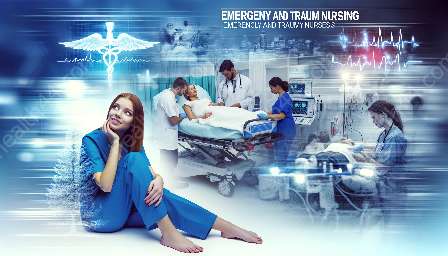Emergency nursing requires a comprehensive understanding of diagnostic testing to facilitate timely and accurate patient assessment, treatment, and care. From laboratory tests to imaging studies, diagnostic testing plays a crucial role in the decision-making process for emergency and trauma nursing professionals. This topic cluster aims to delve into the various aspects of diagnostic testing in emergency nursing, providing insights into its significance, types of tests, interpretation, and implications for patient care.
The Significance of Diagnostic Testing in Emergency Nursing
In the fast-paced environment of emergency care, diagnostic testing serves as a critical tool to aid healthcare professionals in making informed decisions. Rapid and accurate diagnosis is essential for identifying and addressing potentially life-threatening conditions. By leveraging diagnostic tests, nurses and other emergency care providers can swiftly assess patients, determine appropriate interventions, and monitor their response to treatment.
Types of Diagnostic Tests
Diagnostic testing encompasses a wide range of examinations and procedures, each serving a specific purpose in emergency nursing. This section will explore the different types of diagnostic tests commonly used in the emergency setting, including:
- Laboratory Tests: These include blood tests, urine tests, and other bodily fluid analyses to assess various physiological and chemical parameters.
- Imaging Studies: Radiographic tests such as X-rays, CT scans, and MRI scans provide detailed anatomical information to aid in the diagnosis and management of traumatic injuries and acute medical conditions.
- Point-of-Care Testing: Rapid diagnostic tests performed at the bedside, such as blood glucose monitoring and rapid infectious disease screening, enable immediate assessment and intervention.
- Electrocardiography (ECG): ECGs are crucial for evaluating cardiac function and identifying arrhythmias and other cardiac abnormalities.
- Diagnostic Procedures: Invasive procedures, such as lumbar punctures and endoscopic examinations, may be performed to obtain diagnostic samples or visualize internal structures.
Interpreting Diagnostic Results
Effective interpretation of diagnostic test results is pivotal in emergency nursing practice. With the diverse array of tests available, nurses must possess the knowledge and skills to accurately interpret and act upon the findings. This section will cover the principles of result interpretation, emphasizing the significance of understanding normal ranges, critical values, and potential sources of error in testing methodologies. Furthermore, it will address the collaborative approach between nurses, physicians, and other healthcare professionals in interpreting diagnostic data and formulating appropriate care plans.
Implications for Patient Care
The utilization of diagnostic testing in emergency nursing has profound implications for patient care and outcomes. Nurses play a vital role in not only facilitating the testing process but also in ensuring patient safety, comfort, and understanding. Furthermore, the integration of diagnostic findings into the overall care plan, including medication administration, interventions, and ongoing monitoring, is fundamental to optimizing patient care during emergencies and trauma situations. This section will explore the practical application of diagnostic testing in emergency nursing, highlighting the direct impact on patient assessment, stabilization, and tailored treatment strategies.
Conclusion
Diagnostic testing forms a cornerstone of emergency nursing, enabling healthcare professionals to swiftly and accurately assess, diagnose, and manage patients requiring urgent care. This topic cluster aims to provide a comprehensive understanding of the role of diagnostic testing in emergency and trauma nursing, emphasizing its significance, types, interpretation, and implications for patient care. By leveraging this knowledge, nurses can enhance their expertise and contribute to improved outcomes for individuals experiencing medical emergencies and traumatic injuries.


